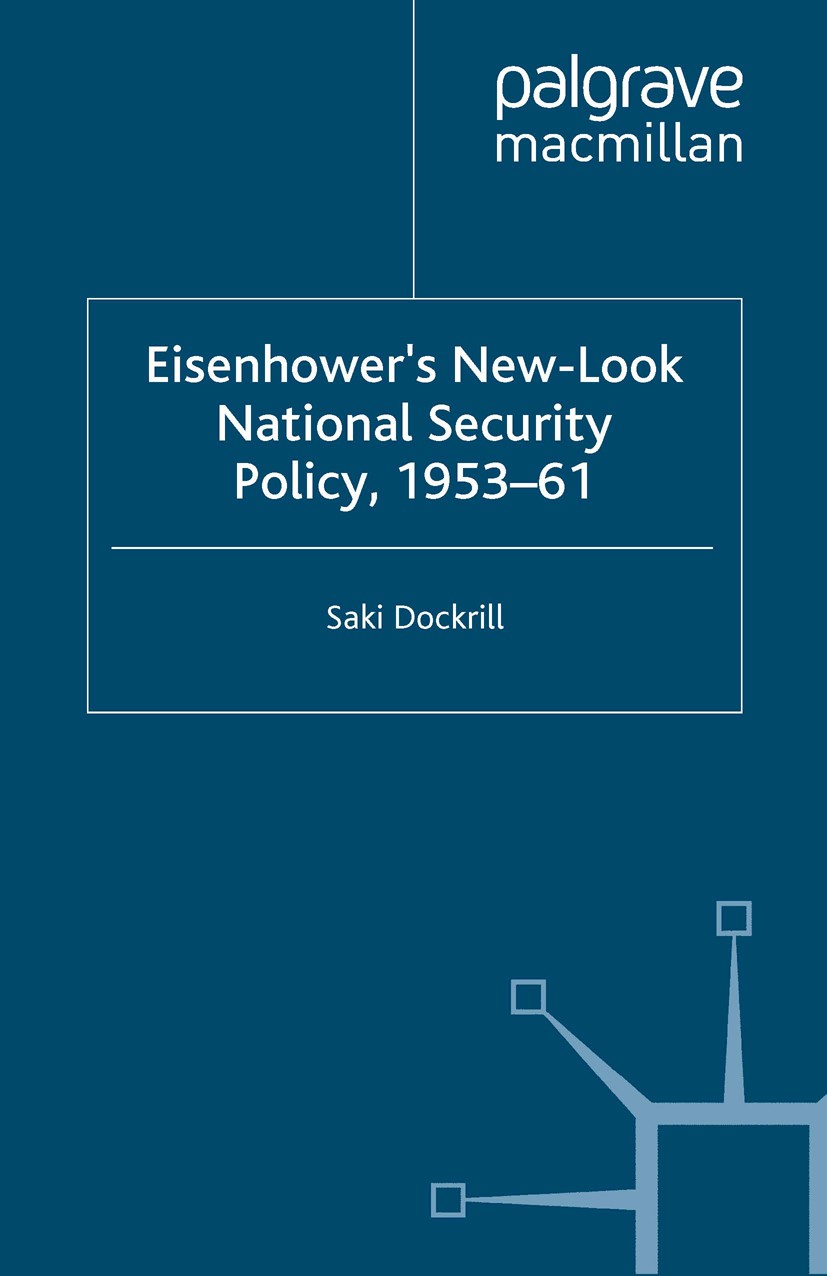| 书目名称 | Eisenhower‘s New-Look National Security Policy, 1953-61 | | 编辑 | Saki Dockrill | | 视频video | http://file.papertrans.cn/306/305490/305490.mp4 | | 图书封面 |  | | 描述 | The New Look sought to formulate a more selective and flexible response to Communist challenges. The New Look was not simply a `bigger bang for a buck‘ nor merely a device for achieving a balanced budget, nor did it amount solely to a strategy of massive retaliation, as is commonly assumed. Dr Dockrill‘s incisive revisionist analysis of the subject throws new light on US ambitious global strategy during the Eisenhower years. | | 出版日期 | Book 1996 | | 关键词 | budget; communism; Europe; Policy | | 版次 | 1 | | doi | https://doi.org/10.1057/9780230372337 | | isbn_ebook | 978-0-230-37233-7 | | copyright | Palgrave Macmillan, a division of Macmillan Publishers Limited 1996 |
The information of publication is updating

书目名称Eisenhower‘s New-Look National Security Policy, 1953-61影响因子(影响力)

书目名称Eisenhower‘s New-Look National Security Policy, 1953-61影响因子(影响力)学科排名

书目名称Eisenhower‘s New-Look National Security Policy, 1953-61网络公开度

书目名称Eisenhower‘s New-Look National Security Policy, 1953-61网络公开度学科排名

书目名称Eisenhower‘s New-Look National Security Policy, 1953-61被引频次

书目名称Eisenhower‘s New-Look National Security Policy, 1953-61被引频次学科排名

书目名称Eisenhower‘s New-Look National Security Policy, 1953-61年度引用

书目名称Eisenhower‘s New-Look National Security Policy, 1953-61年度引用学科排名

书目名称Eisenhower‘s New-Look National Security Policy, 1953-61读者反馈

书目名称Eisenhower‘s New-Look National Security Policy, 1953-61读者反馈学科排名

|
|
|
 |Archiver|手机版|小黑屋|
派博传思国际
( 京公网安备110108008328)
GMT+8, 2025-11-13 03:53
|Archiver|手机版|小黑屋|
派博传思国际
( 京公网安备110108008328)
GMT+8, 2025-11-13 03:53


